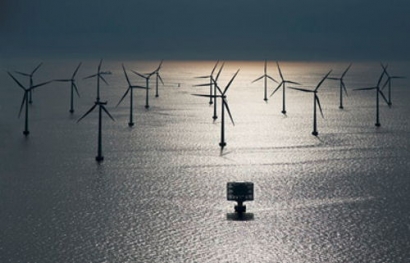
The 500 MW Fécamp offshore wind farm will be composed of 71 wind turbines located between 13km and 22km from the coast of northwest France. Project commissioning is scheduled in 2023. The power generated by the wind farm will provide enough annual electricity to meet the power needs of approximately 770,000 people, or over 60% of the Seine-Maritime department’s population. The construction of the project will create over 1,400 local jobs in total. During its 25-year service life, approximately 100 local ongoing full-time jobs based at the port of Fécamp will also be created to maintain the wind farm.
Bruno Bensasson, EDF Group senior executive vice-president Renewable Energies and chairman and CEO of EDF Renewables commented, “We are thrilled to have contributed to the creation of an industrial sector that creates value and jobs for the territories. These large-scale projects fit with EDF’s strategy, under which it aims to double its renewable energy capacity worldwide between 2015 and 2030 to 50 GW net. This is how we will build a CO2-neutral energy future as well.”
The total project capital cost is estimated to be €2 billion, of which the majority will be financed through non-recourse project level debt. Fécamp offshore wind farm is underpinned by a 20-year power purchase agreement (PPA) granted by the state, in June 2018.
The consortium has sealed equipment supply contracts with top-tier suppliers, including:
RTE, responsible for connecting the wind farm from the substation to the coast and then until Normandy’s electricity grid, will start its onshore works in June.
SGRE’s new turbine manufacturing plant in Le Havre, at which construction is set to begin this summer, will create 750 jobs. The manufacturing of the gravitational foundations for the wind turbines will commence this summer at the Grand Port Maritime site, providing work for around 600 people. The wind turbines will be assembled at the Port of Cherbourg. These orders come at a time when the country intends to boost its activity after two months of lockdown.
This project has been guided by extensive consultation carried out for over 10 years with local stakeholders (state services, elected officials from the region, the Department, coastal municipalities, and son-government organizations) and is supported by in-depth environmental studies undertaken with local environmental associations. Specific work was also carried out in close collaboration with the fishing industry to ensure the coexistence of various maritime activities on the site All the project partners possess considerable experience in offshore wind farms and in the delivery of large-scale industrial projects:
John Whelen, EVP and chief development officer, Enbridge, concluded, “We are pleased to mark this important milestone with our partners. The start of construction of Fécamp demonstrates our continued commitment to offshore wind development in Europe and further positions us as a diversified energy infrastructure leader.”
Caption: Lillgrund Offshore Wind Farm at sunset, Siemens 2.3 MW Offshore Wind Turbines and Energy Substation (Transformer), Oresund Sound, Sweden. (Photo from Siemens AG)

